Since 2019, Grand Camlica Mosque – which stretches over 57,500sq metres (620,000sq feet) and has six minarets and a towering central dome – has been the most visible structure on the Anatolian side of Turkey’s cultural capital.
Perched on the hill after which it is named, the now-largest mosque in Turkey opened its doors to the public on March 7, 2019, as a place of worship as well as a symbol of state pride and Turkish national identity.
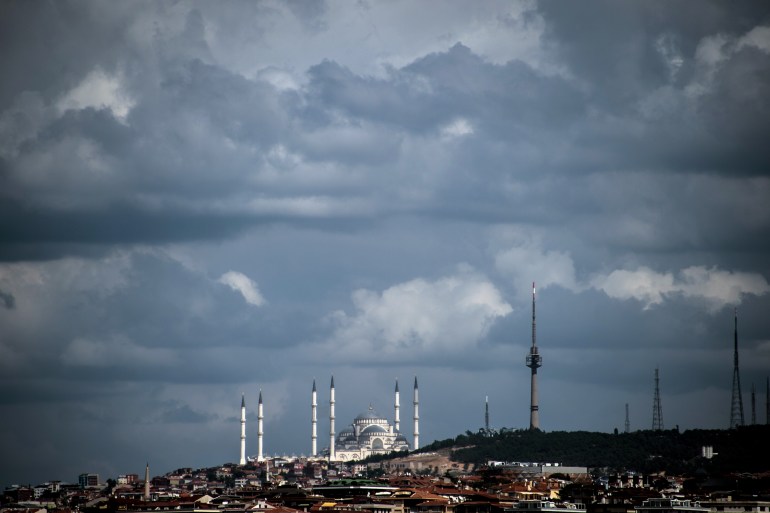
Since the establishment of the modern republic by Mustafa Kemal Ataturk in 1923, Turkish nationalism has been largely defined by secular symbols that lean away from religion and the country’s Ottoman past.
As president of the early republic, Ataturk outlawed the fez and turban – two forms of Ottoman male headgear – and later the headscarf was banned in state institutions. He also transformed the Turkish language from Arabic to Latin script, moved the capital city from the Ottoman epicentre of Constantinople – later known as Istanbul – to a newly established Ankara, and replaced religious courts with a European-inspired legal system.
Although the “headscarf ban” was notably overturned by the ruling Justice and Development Party (AK Party), which came to power 20 years ago, religious symbols have remained distinct from the secular Turkish state.
Yet, Camlica Mosque reflects how Turkish President Recep Tayyip Erdogan has attempted to challenge the secular narrative of Turkish nationalism by attempting to connect state pride to an Ottoman past and an Islamic heritage.
“The main objective of the 1923 Turkish revolution was to create a new nation and national identity by fighting the old one,” said Turkish sociologist Ferhat Kentel. “To do this, the Kemalists cut ties with Ottoman times.”
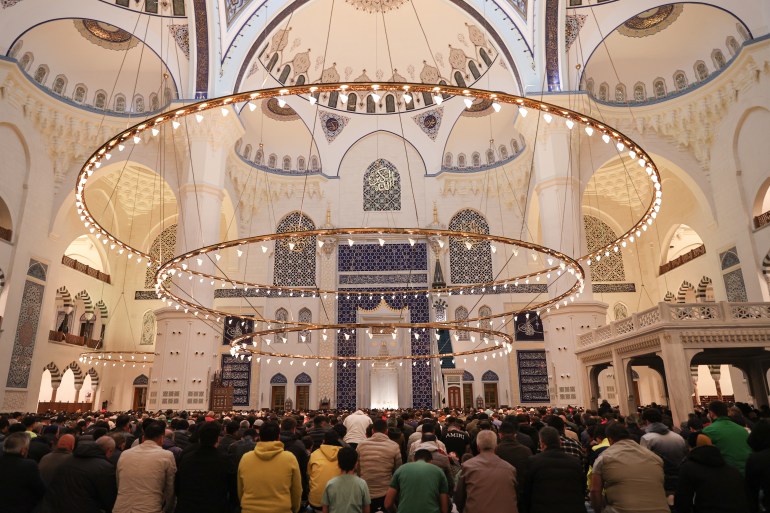
“The same goes with AK Party. It used religious and Ottoman symbolism, such as Camlica Mosque, but especially Hagia Sophia Mosque, to cut ties with the Kemalist regime,” he added.
Strong symbolism
Hayriye Gul, one of the two female architects behind the design of the complex, told Al Jazeera that the structure aimed to contribute to the silhouette of Istanbul in a modern and practical way while reflecting traditional Turco-Islamic architecture.
“It’s a modern version of the traditional mosque which included a madrassa [school] and hammam [public bath]. To suit today’s needs, it has a conference hall, parking lot and library,” said Gul.
For Gul and her co-architect Bahar Mizrak, the building also evokes a sense of national pride.
“As Turkish citizens and architects, we’re proud to be part of building such a monumental mosque during the republican era,” said Mizrak.
Designed as a successor to Ottoman-era mosques, the complex is inspired by the work of the empire’s chief architect Mimar Sinan who built Istanbul’s famous Suleymaniye Mosque, among 300 other structures.
Camlica Mosque includes a prayer hall that can hold about 60,000 people, a museum, a gallery, art workshops, a library and a conference hall, and has many symbolic features that link Turkish and Ottoman history to national identity.
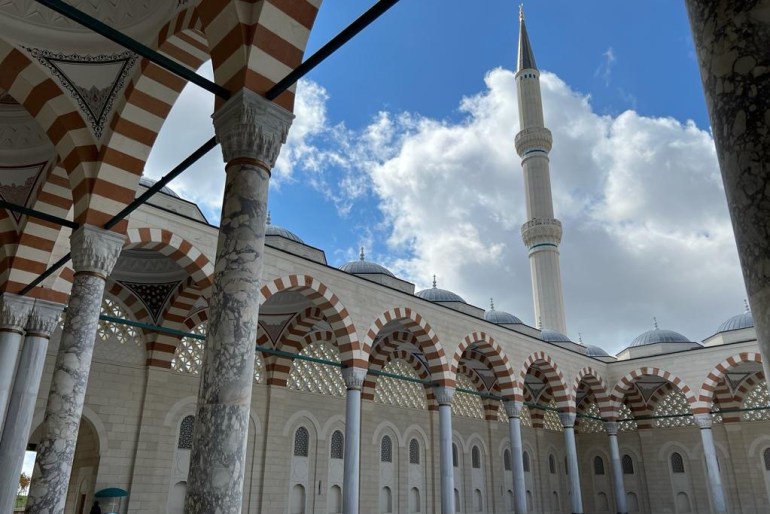
Seen from anywhere in the city centre, the mosque’s main dome stands 72 metres (236 feet) tall to represent the 72 ethnic groups in Turkey and spans 34 metres (111 feet) to represent the city of Istanbul’s number plate.
Four minarets are 107.1 metres (351 feet) high, signifying the Manzikert Victory of 1071 which saw Seljuk Turks, led by King Alp Arslan, crush an imperial Byzantine army said to be twice their size.

Inside the dome, 16 names attributed to God in Islam are artistically drawn to signify the 16 Great Turkic Empires before the establishment of the modern republic. The number 16 also features in Turkey’s presidential seal, with its large 16-pointed sun surrounded by 16 five-pointed stars to symbolise the Turkish Republic and the 16 great empires.
Linking to more religious symbols, the complex has five smaller domes that represent the five pillars of Islam, and eight monumental doors to represent the eight gates to heaven, according to Muslim belief.
Nationalist projects, messaging
While some observers have linked the decision to build Camlica Mosque to the government’s 2020 reconversion of Hagia Sophia and the 2017 construction of a mosque in Taksim – a square associated with secularism and republicanism, others say the former is part of the government’s political manoeuvring.
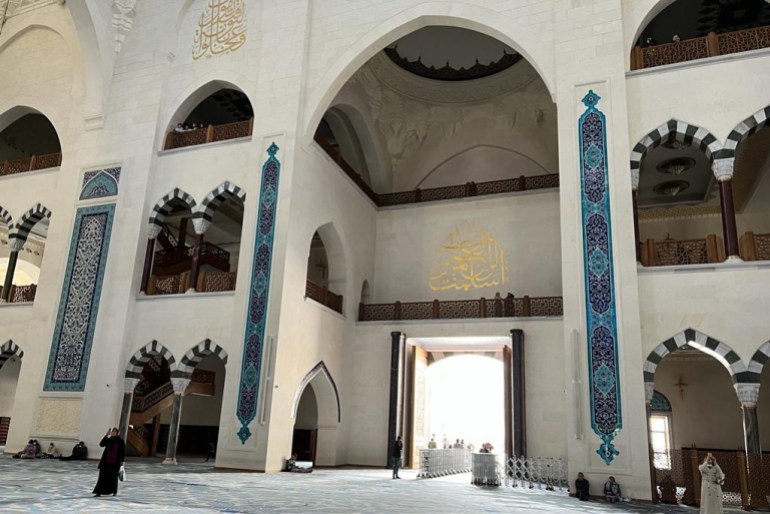
“There was a need to build a mosque in Taksim because there wasn’t any, and the reconversion of Hagia Sophia was a historic promise of the conservatives, not of Erdogan. But Camlica Mosque was never needed, Osman Sert, PanoramaTR research director, told Al Jazeera.
“Camlica Mosque was a political decision and part of a series of nationalist projects launched by Erdogan and the AK Party to build national pride at a time when they have little to offer in terms of economic development,” he added.
Over the past five years, Turkey’s economic crisis has seen the Turkish lira drop to historic lows and people’s concerns over the cost of living grow. Meanwhile, Turkey has undertaken a range of political and economic measures to boost its national pride and independence.
Among those projects are TOGG, the first ever Turkish-made electric car launched in 2022, the TCG Anadolu, an amphibious assault ship and Turkey’s first landing platform dock in 2023; and Camlica Tower, a huge telecommunications tower inaugurated in 2021 as Istanbul’s tallest.
Erdogan has also invoked nationalist messaging during his electoral campaign ahead of the May 14 vote by incorporating the country’s centenary celebration into slogans, and promising that the next 100 years will be the “Century of Turkey”.
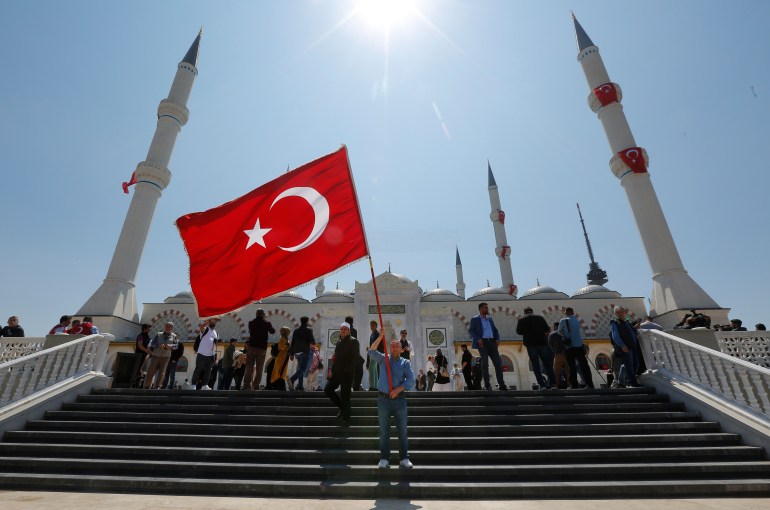
According to Sert, Erdogan’s nationalist rhetoric has particularly spiked since the 2016 coup attempt which could have seen his government overthrown.
“The coup attempt was a breaking point in the country’s history that created public concern about the republic’s security and continuity. It triggered nationalist feelings wrapped around worries that the country’s fate was under threat,” Sert told Al Jazeera.
He added that the emergence of the leader of the ultranationalist, right-wing Nationalist Movement Party (MHP), Devlet Bahceli, as Erdogan’s main political supporter at the time also indicated this.
“To make this momentum more sustainable, Erdogan needed the consent of the people, so religion and nationalism came together,” he said.
National pride
But according to Kentel, “Erdogan’s ideology is not religious, but nationalist with some religious undertones.”
Erdogan and the AK Party have been successful in “integrating traditional and conservative sectors of society into nationalist identity. With this renewed form of nationalism, sectors which did not previously associate with the nation-state, now relate strongly with it,” he said.

Kentel and Sert said while this form of nationalism has attracted conservative sectors of society, it has polarised and alienated many others.
Still, Camlica Mosque has become an important stop for tourists and locals visiting Ottoman palaces and mosques, with many seeing it as a success for Erdogan and his party.
“Camlica Mosque is a source of national and political pride. It represents Islam’s presence in the modern world and symbolises AK Party’s political power,” said Mustafa, a 39-year-old accountant visiting the mosque.
“While values of the republic were secular and mostly rejected by the country’s conservative sectors, the AK Party has managed to keep these concepts while appealing to a larger segment of society,” he added.
Another mosque-goer, 37-year-old Suheyb, agreed: “The AK Party brought the state closer to the people. Camlica Mosque is seen as a symbol of this transformation.”
Like the mosque-goers, former AK Party parliamentarian, Iffet Pollat, told Al Jazeera that Camlica Mosque was a “salutation to the Turkish Republic, to Ottoman heritage and our Muslim ancestors, all in one. It is a masterpiece of the Turkish Republic under Erdogan”.

